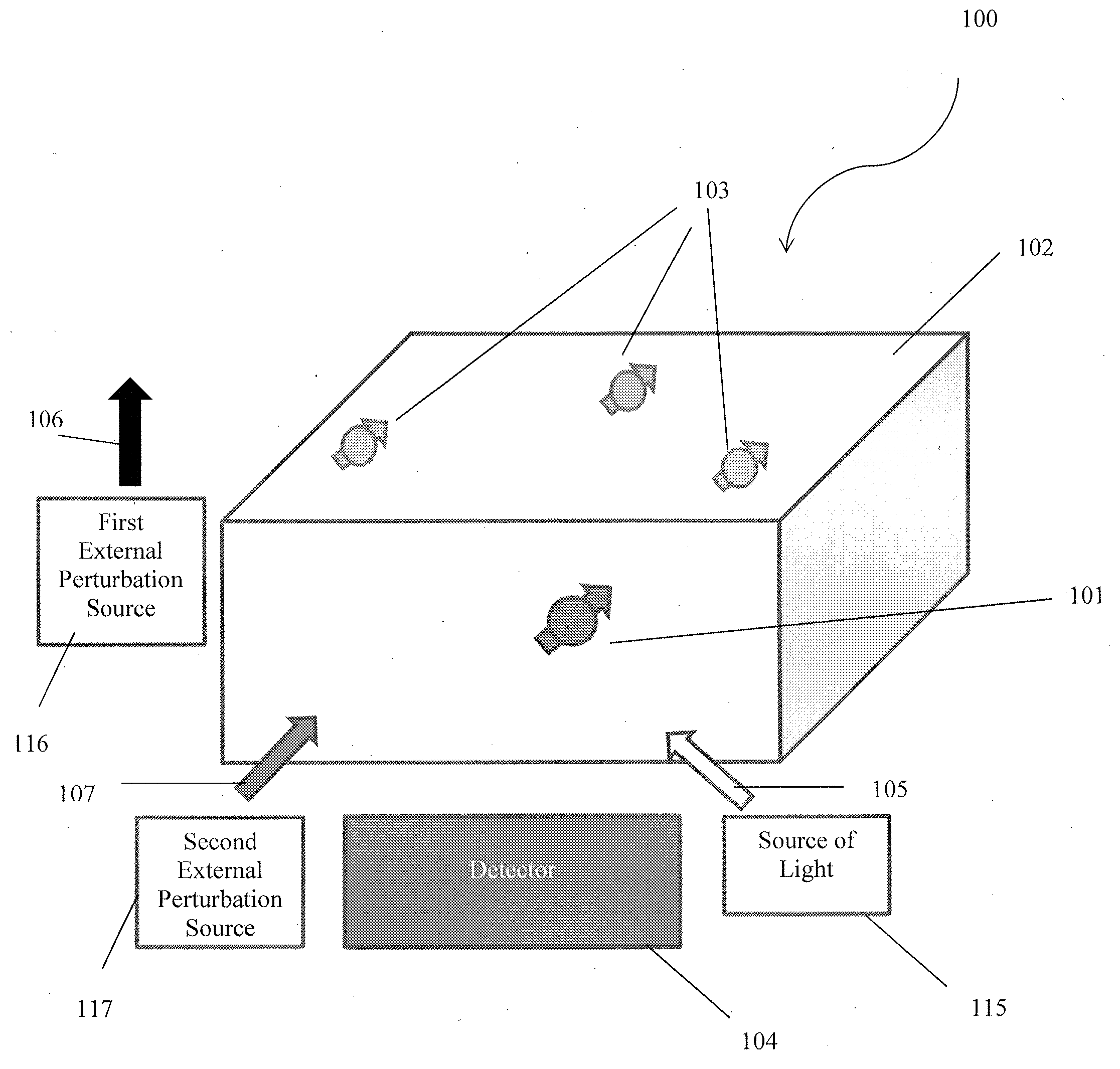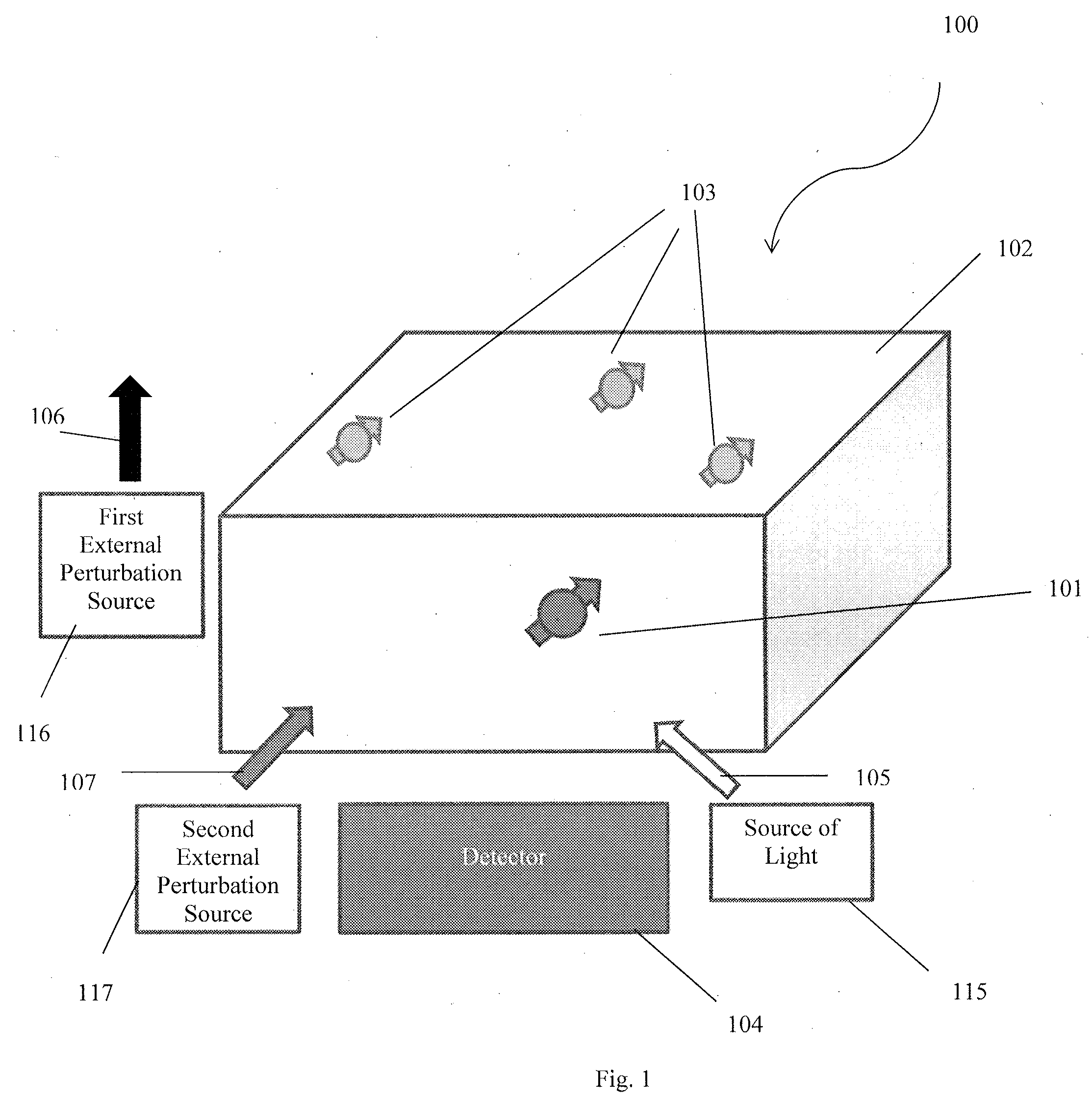Magnetic sensing and imaging using interactions between surface electron spins and solid state spins
a technology of surface electron spins and interactions, applied in the field of magnetic sensing and imaging using interactions between surface electron spins and solid state spins, can solve problems such as limited to the detection of large ensembles of spins
- Summary
- Abstract
- Description
- Claims
- Application Information
AI Technical Summary
Benefits of technology
Problems solved by technology
Method used
Image
Examples
Embodiment Construction
[0051]A method and device for magnetic resonance imaging with single nuclear-spin sensitivity under ambient conditions is described.
[0052]In an aspect, the device includes a sensor having a network of isolated electronic-spin quantum bits (qubits) that act as quantum reporter spins situated nearby (<5 nm) the sensing target, and another solid state electronic spin system having a spin-state dependent fluorescence located in the proximity of the qubits and below the surface of the sensor but within a range of 1 nm to 30 nm to facilitate interaction with the qubits. The device additionally includes a source of light and a source of first and second external perturbation that allow the device to coherently manipulate the qubits and the solid state electronic spins. The interaction between the spin states of the qubits and solid-state electronic spins alters the spin-state dependent fluorescence of the solid-state electronic spins. The system additionally includes an optical recorder. O...
PUM
 Login to View More
Login to View More Abstract
Description
Claims
Application Information
 Login to View More
Login to View More - R&D
- Intellectual Property
- Life Sciences
- Materials
- Tech Scout
- Unparalleled Data Quality
- Higher Quality Content
- 60% Fewer Hallucinations
Browse by: Latest US Patents, China's latest patents, Technical Efficacy Thesaurus, Application Domain, Technology Topic, Popular Technical Reports.
© 2025 PatSnap. All rights reserved.Legal|Privacy policy|Modern Slavery Act Transparency Statement|Sitemap|About US| Contact US: help@patsnap.com



